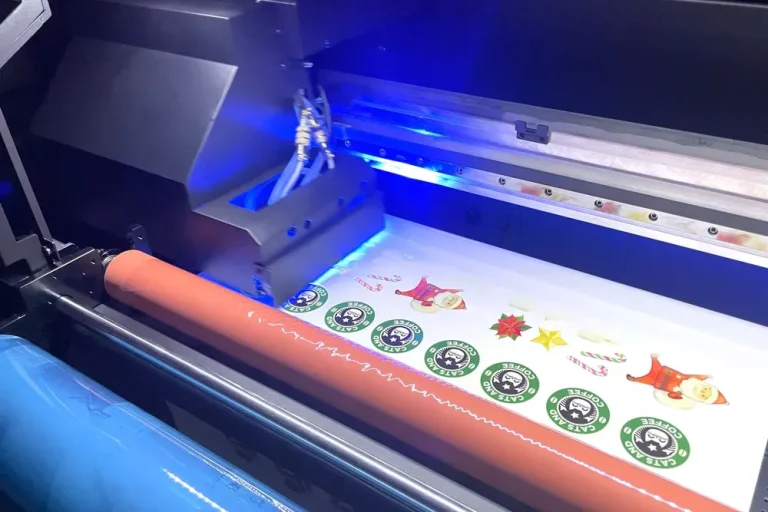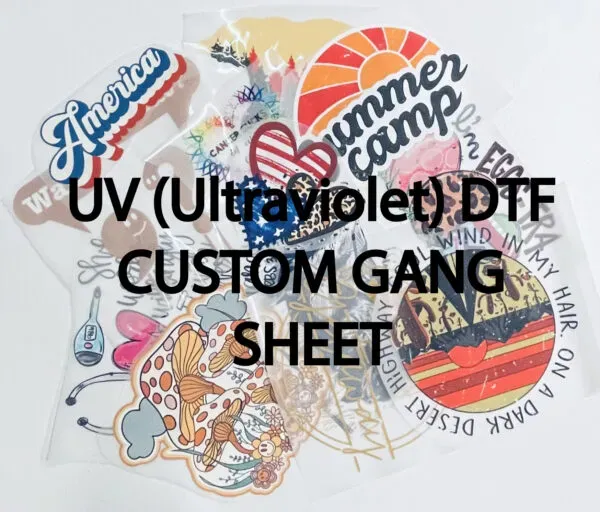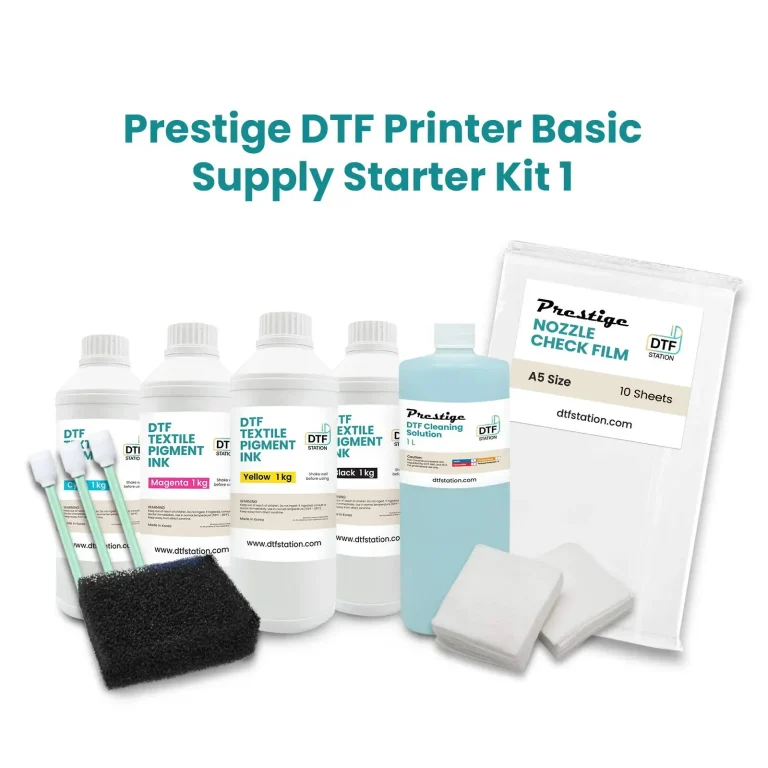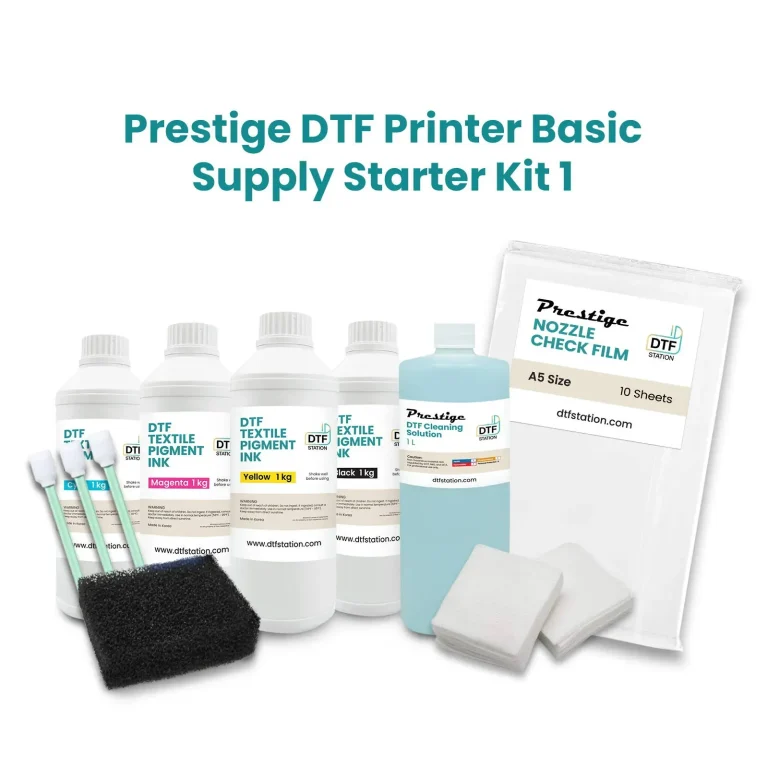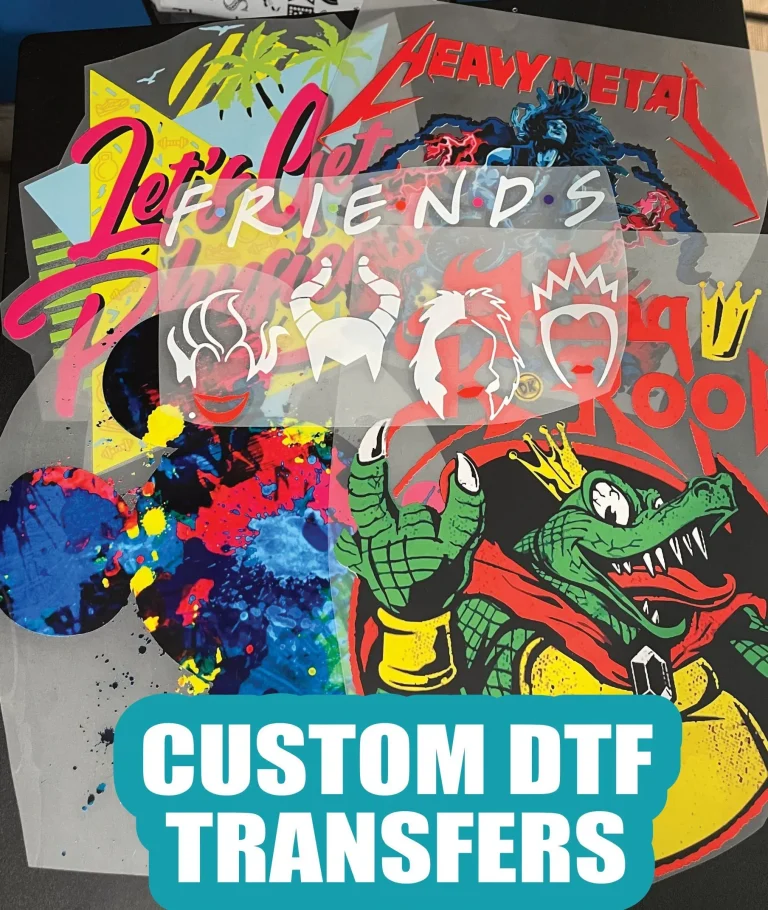DTF transfers represent a significant breakthrough in the realm of custom printing, especially for small business owners and DIY enthusiasts. This innovative Direct-to-Film printing technique provides a seamless way to create stunning designs on various fabrics, offering a perfect blend of quality and affordability. As small businesses strive to distinguish themselves in a competitive market, the benefits of DTF printing, such as versatility and ease of use, become increasingly essential. Whether you aim to craft unique apparel or personalized items, DTF Transfers empower you to bring your creative visions to life without breaking the bank. Join us as we explore the transformative impact of this technology and discover how it can enhance your custom printing ventures.
Direct-to-Film printing, often referred to as DTF printing, is revolutionizing how individuals and small enterprises approach textile design. This technique allows for vibrant and detailed designs to be easily transferred onto various materials, catering not only to professional custom printing projects but also to home-based DIY applications. As the landscape of small business printing continues to evolve, alternative printing solutions like film transfer methods have emerged, providing flexibility and lower initial costs. The DIY heat transfer trend is gaining momentum, inviting enthusiasts to engage in creative projects with newfound accessibility. Understanding the benefits of DTF printing helps unlock a world of possibilities for both seasoned entrepreneurs and enthusiastic hobbyists alike.
Understanding DTF Transfers and Their Mechanics
DTF Transfers, or Direct-to-Film transfers, represent a significant advancement in custom printing technology, exemplifying how innovation can simplify the print process for both small businesses and DIY enthusiasts. This technique entails printing designs onto a special film using high-quality inks, enabling an intricate and vibrant reproduction of artwork. The film then undergoes a coating with adhesive powder and is heated, which serves to bond the design to a variety of fabric types. This method opens a swath of possibilities for customization at a fraction of the time and cost associated with traditional screen printing methods.
The mechanics of DTF printing, from the application of adhesive to the heat transfer process, are precisely designed to ensure that the prints are durable and striking. Unlike traditional methods that may require extensive setup and multiple materials, DTF printing is streamlined. This ease of use not only attracts seasoned printers but also welcomes novices who can now experiment with custom printing without the overhead costs often seen in the industry. The ability to achieve high-quality prints at home empowers creative individuals and small brands to thrive in the marketplace.
Why DTF Printing is Ideal for Small Business Printing
For small business owners venturing into custom apparel, DTF printing provides a unique opportunity to break into the market with minimal investment. Traditional printing methods often necessitate expensive machinery and materials, creating a high barrier to entry. However, DTF transfers allow entrepreneurs to create high-quality, custom prints without the hefty costs associated with screen printing or embroidery. This cost-effectiveness can significantly enhance profit margins and reduce overhead, making it an attractive solution for small enterprises aiming for growth.
Moreover, DTF printing’s versatility is a boon for small businesses. It accommodates a variety of fabrics, from cotton to blends, allowing business owners to diversify their product offerings. Whether it’s a unique t-shirt design, branded promotional items, or custom bags, the versatility of DTF transfers meets the diverse needs of customers. This flexibility opens the door to expanding product lines and targeting niche markets, ensuring that small businesses can adapt to changing customer preferences with ease.
Exploring the Benefits of DTF Printing for DIY Heat Transfer
DIY enthusiasts increasingly are gravitating towards DTF printing for its simplicity and accessibility. No longer relegated to professional printing shops, individuals can now create their own personalized apparel using DTF transfers right at home. This method democratizes the printing process, allowing anyone with a desire to design and create customized products to participate. The availability of home kits makes it easier than ever to start, enabling users to experiment with different designs on demand.
Additionally, DTF printing encourages creativity and individuality. The low-cost factor associated with personalizing apparel means hobbyists can explore their artistic side without the need for pricey investments. Whether crafting gifts or launching a small side business, DIY enthusiasts can utilize DTF printing to bring their ideas to fruition. This burgeoning trend is not only creative but also fosters a community of like-minded individuals eager to share and inspire others, showcasing their work across social media platforms.
Market Trends: The Rise of DTF Printing
The custom printing market is witnessing a notable shift towards DTF printing solutions, highlighting the growing demand for home printing technology. Recent analyses indicate that as personalization becomes a cornerstone of consumer choices, DTF transfers are emerging as a preferred medium, particularly for small businesses aiming to offer tailored products. This trend is amplifying the accessibility of custom printing, allowing customers to express their uniqueness through apparel, which is quickly becoming a staple in various markets.
As the popularity of DTF printing grows, so does the influence of social media in driving this trend. Platforms like Instagram and TikTok serve as powerful tools where users share their creations, tutorials, and DTF printing knowledge. This not only provides visibility to the use of DTF technology but sparks further interest from budding entrepreneurs and DIY enthusiasts globally. The engaging visual nature of these platforms helps fuel interest, creating a vibrant online community that contributes to the rapid market expansion of DTF transfers.
Challenges in DTF Printing: Quality and Training Considerations
While DTF printing offers numerous advantages, users must be cognizant of the challenges that come with it, particularly regarding material quality. The end product highly depends on the quality of inks, films, and the printers used. Though initial costs may be lower than some traditional processes, skimping on materials can lead to subpar results that do not hold up over time. Users must conduct research to ensure they are sourcing the best supplies to achieve vibrant and lasting prints.
Furthermore, while DTF printing is fundamentally user-friendly, it is essential that practitioners familiarize themselves with the process through training or hands-on practice. Knowing the nuances of heat settings and application techniques can greatly influence the quality of the final printed garment. A commitment to learning, from understanding equipment to mastering techniques, is vital for anyone looking to maximize the benefits of DTF printing and ensure successful outcomes.
The Future of DTF Transfers in Custom Printing
Looking ahead, the outlook for DTF transfers in the custom printing landscape appears exceedingly bright. With ongoing advancements in printing technology, we can expect to see improvements in ink quality, print longevity, and user experience. As more individuals and businesses embrace DTF printing, the market is likely to expand, accommodating an even broader range of applications and fabrics. This evolution not only benefits current users but also attracts newcomers into the custom printing space.
Moreover, as consumer interest in personalized products continues to surge, the DTF printing market will likely adapt to cater to these demands. With the rise of online shopping and personalized gifts, small businesses utilizing DTF printing can position themselves effectively within this growing niche. The adaptability and affordability of DTF transfers make it a sustainable option for entrepreneurs and DIY enthusiasts alike, ensuring that this innovative technology remains relevant and impactful in the years to come.
Frequently Asked Questions
What are DTF Transfers and how do they work?
DTF Transfers, or Direct-to-Film printing, is a technique that allows for high-quality custom printing on fabrics. The process involves printing a design onto a special transparent film, applying a heat-activated adhesive powder, and then using a heat press to transfer the design onto the desired fabric. This method offers vibrant colors and intricate details, making it a popular choice for both small business printing and DIY heat transfer projects.
What are the benefits of using DTF printing for small business printing?
DTF printing offers numerous benefits for small businesses, including cost-effectiveness, versatility, and efficiency. This method has lower initial setup costs than traditional screen printing and works on various fabrics, allowing businesses to create products like t-shirts, bags, and hoodies. Additionally, DTF Transfers enable quick production times, allowing businesses to meet customer demands swiftly.
Can DTF Transfers be used for DIY heat transfer projects?
Yes, DTF Transfers are ideal for DIY heat transfer projects. This printing method is user-friendly and accessible, allowing individuals to create custom designs from home without professional training. Home kits for DTF printing are available, empowering DIY enthusiasts to experiment with their designs and create unique apparel or gifts easily.
What materials are needed for DTF printing?
To successfully execute DTF printing, essential materials include a quality printer that supports DTF inks, transfer film, heat-activated adhesive powder, and a heat press. The success of the process relies heavily on the quality of these materials, ensuring that the final prints are vibrant and durable for everyday use.
How does DTF printing compare to other custom printing methods?
Compared to traditional methods like screen printing or embroidery, DTF printing offers distinct advantages such as affordability, a shorter learning curve, and the ability to print intricate designs with vibrant colors. While screen printing requires more extensive equipment and setup, DTF printing is a more accessible option for small businesses and DIY projects alike.
What trends are influencing the growth of DTF Transfers in the market?
Current trends in the market suggest a significant rise in home printing solutions, with DTF Transfers leading due to their efficiency and user-friendliness. Additionally, the influence of social media platforms, where users share their DTF printing projects and tutorials, is accelerating interest in this technology, making it a go-to choice for creating personalized items.
| Key Points | Details |
|---|---|
| What is DTF Printing? | A process to transfer designs onto fabrics using specialized inks, heat-activated adhesive, and heat press. |
| Advantages for Small Businesses | Cost-effective, versatile for various fabrics, and enables faster production times. |
| Benefits for DIY Enthusiasts | Easy to use, allows for creativity, and home kits make it accessible for all levels. |
| Market Trends | Growing interest in home printing solutions and influence of social media platforms on DTF popularity. |
| Challenges | Need for high-quality materials and foundational training for effective printing. |
Summary
DTF Transfers represent a revolutionary advancement in the custom printing industry, providing unparalleled opportunities for small businesses and DIY enthusiasts. The method’s affordability makes it accessible to those starting their ventures, allowing them to produce high-quality, custom designs with ease. The versatility of DTF transfers enables the creation of various products, catering to a broad audience and diverse market needs. Despite some challenges like the requirement for quality materials and a learning curve in technique, the benefits far outweigh these hurdles. As this technology continues to gain popularity, the potential for innovation and growth in the DTF Transfers space is immense, making it an exciting time for both entrepreneurs and hobbyists.

